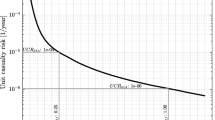Abstract
For important facilities, such as hospitals or schools, advanced seismic risk assessment methodologies have been developed and are now available for use by owners and facility managers. These include seismic hazard analysis coupled with structural and non-structural response and damage analyses leading to a final consequence analysis that provides indications of performance measures, which are often referred to as decision variables. Typical decision variables are repair costs, probability of collapse of the entire building and downtime. These decision variables do not provide specific information regarding the likelihood of individual rooms to remain functional after an earthquake. For the case of a hospital, for example, information regarding the functionality of specific critical rooms (e.g. operating or emergency rooms) could influence major design/retrofit decisions by the owner or facility manager. The main objective of this paper is to present, through a case study hospital building in Italy, a methodology for assessing the loss of functionality of individual rooms in critical facilities following an earthquake event. The methodology includes all the aspects that are usually considered individually in seismic risk assessment, such as ground motion selection for probabilistic seismic hazard analysis, structural performance of the building, and the performance of non-structural elements that can affect the functionality of selected rooms.

Adapted from Calvi et al. (2014)














Similar content being viewed by others
References
Ambraseys NN, Simpson KA, Bommer J (1996) Prediction of horizontal response spectra in Europe. Earthq Eng Struct Dyn 25(4):371–400
Baker JW (2011) The conditional mean spectrum: a tool for ground motion selection. ASCE J Struct Eng 137:322–331
Baker JW (2015) Efficient analytical fragility function fitting using dynamic structural analysis. Earthq Spectra 31(1):579–599
Barani S, Spallarossa D, Bazzurro P (2009) Disaggregation of probabilistic ground-motion hazard in Italy. Bull Seismol Soc Am 99:2638–2661
Barrera Gutiérrez de Piñeres MJ (2015) Effects of pounding on the collapse fragility of a hospital building. Master’s Dissertation, Istituto Universitario di Studi Superiori di Pavia, Università degli Studi di Pavia
Boroschek R, Retamales R (2001) Damage observed in El Salvador’s public hospital system during the January 13, 2001 earthquake. WHO/PAHO Collaborating Center for Disaster Mitigation in Health Facilities, University of Chile, Chile
Bradley B, Fhakal RP, Cubrinovski M et al (2007) Improved seismic hazard model with application to probabilistic seismic demand analysis. Earthq Eng Struct Dyn 36:2211–2225
Calvi GM, Sullivan TJ, Welch DP (2014) A seismic performance classification framework to provide increased seismic resilience. In: Proceedings, 15th European conference on earthquake engineering, Istanbul, Turkey
Carr AJ (2010) RUAUMOKO Volume 3: user manual for the 3-dimensional version of Ruaumoko3D. Computer Program Library, Dept. of Civil Engineering, University of Canterbury, Christchurch
Chock G, Robertson I, Nicholson P, Brandes H, Medley E, Okubo P, Hirshorn B, Sumada J, Kindred T, Linurna G, Sarwar A, Dal Pino J, Holmes W (2006) Compilation of observations of the October 15, 2006, Kiholo Bay (Mw 6.7) and Mahukona (Mw 6.0) earthquakes, Hawaii, vol 31. Earthquake Engineering Research Institute, Oakland
Cimellaro GP (2013) Correlation in spectral accelerations for earthquakes in Europe. Earthq Eng Struct Dyn 42:623–633
Crisafulli FJ (1997) Seismic behavior of reinforced concrete structures with masonry infills. Ph.D. Thesis, University of Canterbury, Christchurch, New Zealand
FEMA (2009) Quantification of building seismic performance factors, FEMA P695. Prepared by the Applied Technology Council for the Federal Emergency Management Agency, Washington, D.C., USA
FEMA (2012) Seismic performance assessment of buildings, volume 3—supporting electronic materials and background documentation: 3.1 performance assessment calculation tool (PACT), version 2.9.65. Federal Emergency Management Agency, Washington
Hak S, Morandi P, Magenes G, Sullivan TJ (2012) Damage control for clay masonry infills in the design of RC frame structures. J Earthq Eng 16(1):1–35
Jayaram N, Lin T, Baker JW (2011) A computationally efficient ground-motion selection algorithm for matching a target response spectrum mean and variance. Earthq Spectra 27(3):797–815
McGavin G, Patrucco H (1994) Survey of non-structural damage to healthcare facilities in the January17, 1994 Northridge earthquake. Report prepared for HMC Group, Ontario, Canada
Montejo LA, Kowalsky MJ (2007) CUMBIA: set of codes for the analysis of reinforced concrete members—theory and user’s guide. Technical Report, Department of Civil, Construction, and Environmental Engineering, North Carolina State University, USA
Morandi P, Hak S, Magenes G (2013) Simplified out-of-plane resistance verification for slender clay masonry infills in RC frames, Individual Study, Dipartamento di Ingegneria Civile ed Architettura, Università degli Studi di Pavia ed EUCENTRE, European Centre for Training and Research in Earthquake Engineering, Pavia, Italy
Pianigiani M, Cimellaro GP, De Stefano M, Filiatrault A, Przelazloski K, Christovasilis IP, Sullivan TJ, Tanganelli M (2014) A comprehensive methodology for evaluating the seismic resilience of health care facilities considering nonstructural components and organizational models, Second European Conference on Earthquake Engineering and Seismology, Istanbul, Turkey
Porter KA (2003) An overview of PEER’s performance-based earthquake engineering methodology. In: Proceedings of ninth international conference on applications of probability and statistics in engineering, San Francisco, CA
Przelazloski K (2014a) Collapse fragility analysis of Sansepolcro hospital structure. Master’s Dissertation, Istituto Universitario di Studi Superiori di Pavia, Università degli Studi di Pavia
Przelazloski K (2014b) Updated collapse fragility analysis on Sansepolcro hospital structure with masonry infills. Individual Study. Istituto Universitario di Studi Superiori di Pavia, Università degli Studi di Pavia
Spallarossa D, Barani S (2007) Disaggregazione della pericolosità sismica in termini di M-R-ε. Progetto DPC-INGV S1, Deliverable D14. http://esse1.mi.ingv.it/d14.html
Ackowledgements
The study presented in this paper was part of a larger study aimed at developing a comprehensive methodology for evaluating the seismic resilience of health care facilities. The authors gratefully acknowledge the collaboration of Dr. Maria Pianigiani, Dr. Gian Paolo Cimellaro and Professor Mario de Stefano in the course of this project. The support of the emergency department staff of the case study hospital during the course of this study is also gratefully acknowledge.
Author information
Authors and Affiliations
Corresponding author
Rights and permissions
About this article
Cite this article
Barrera, M.J., Przelazloski, K., Filiatrault, A. et al. Assessment of the loss of functionality of individual rooms in critical facilities after earthquakes. Bull Earthquake Eng 15, 1135–1159 (2017). https://doi.org/10.1007/s10518-016-9988-2
Received:
Accepted:
Published:
Issue Date:
DOI: https://doi.org/10.1007/s10518-016-9988-2




